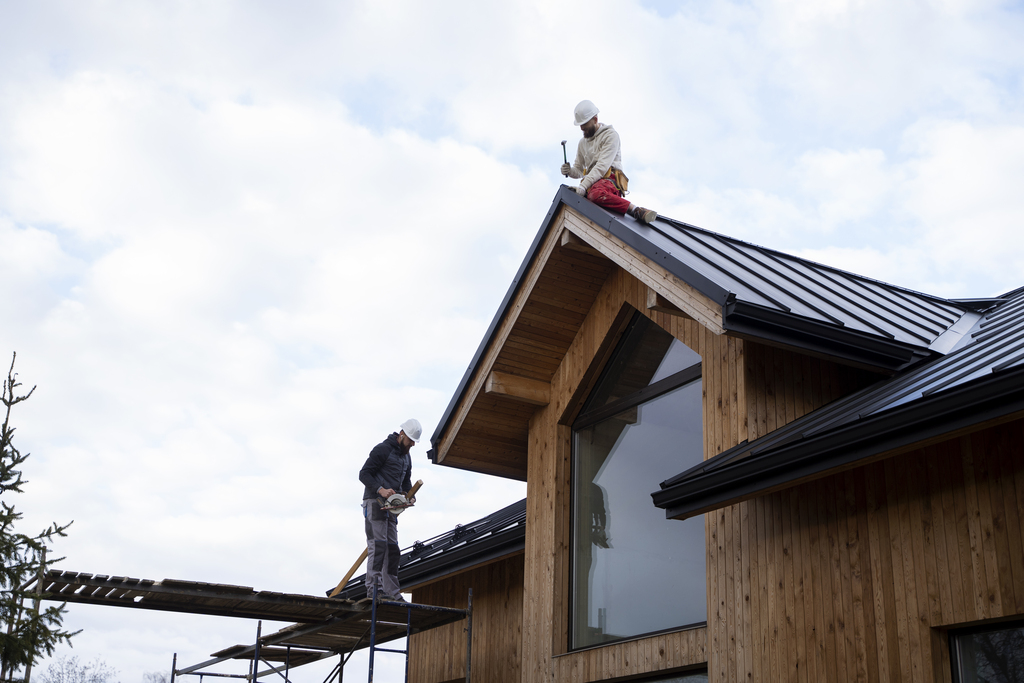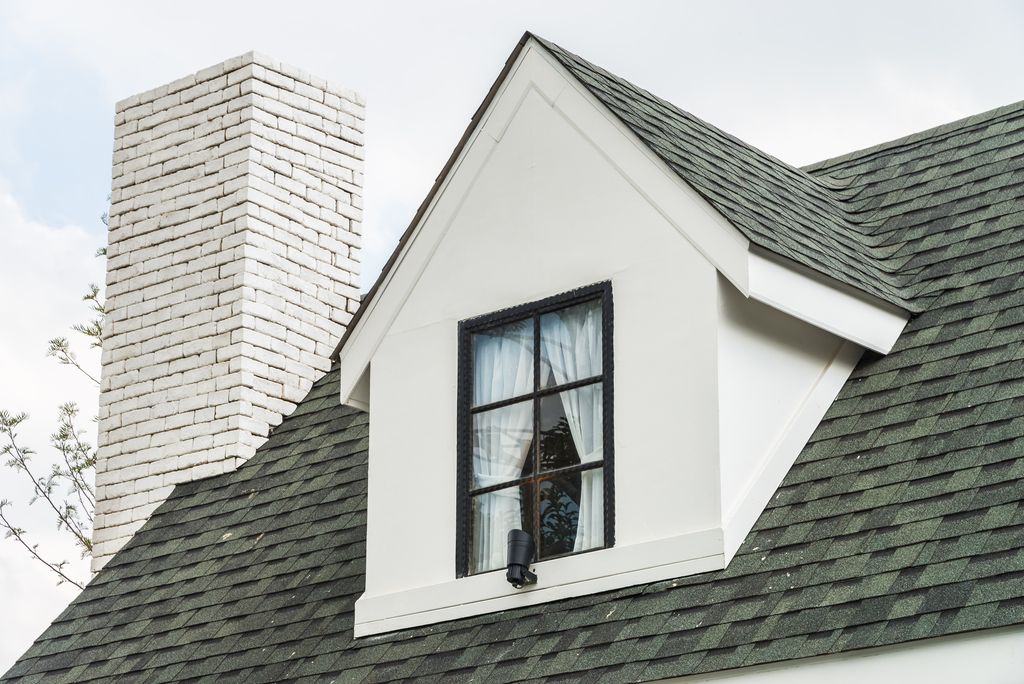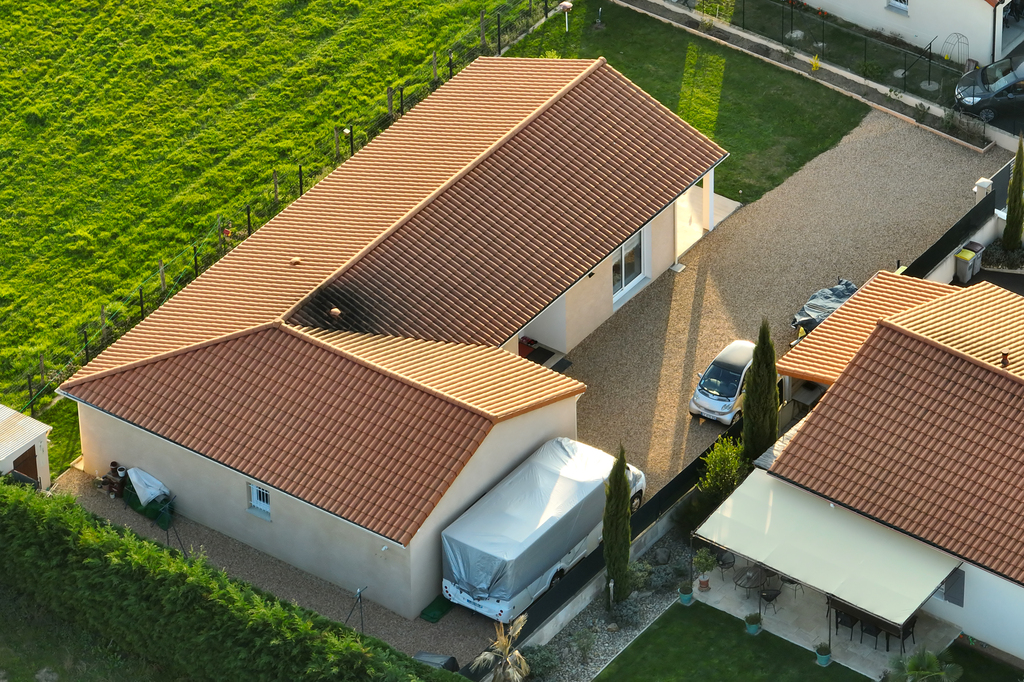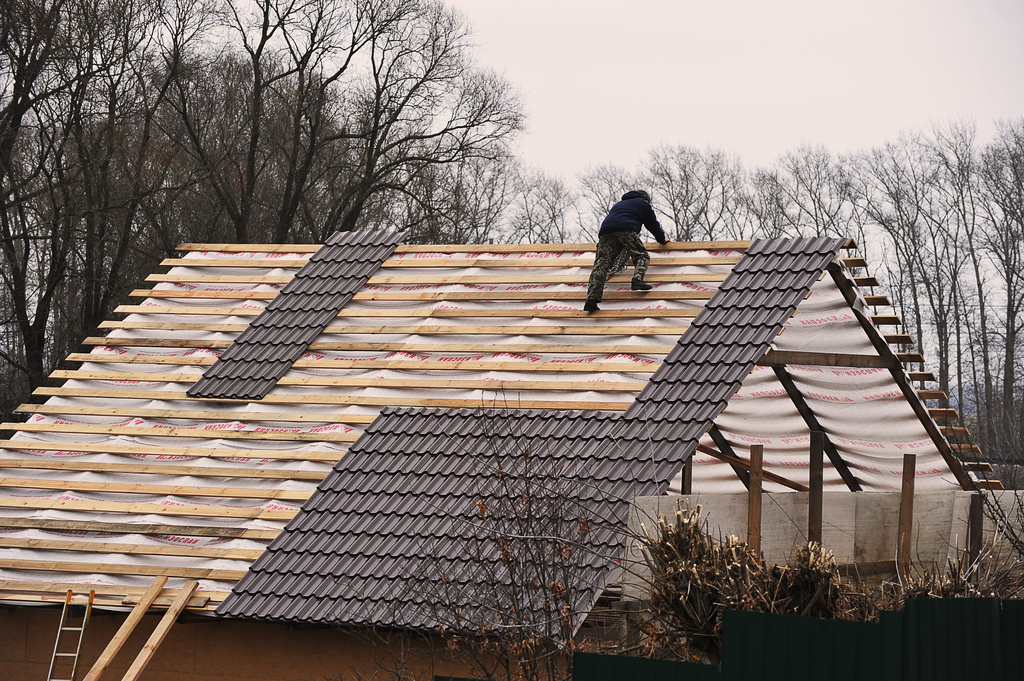Replacing a roof is not a small feat. It is one of the major home repairs that have to be dealt with precision and care. Roof replacement is necessary before the old roof fails and you end up destroying the rest of your house.
Roof replacement must not be taken lightly, nor must you delay its repair. Inspect your roof regularly to keep an eye on its integrity. It’s better to detect early damage than let the whole thing rot.
In certain cases, you may require a permit from your local authorities before you repair, or replace. When you see your roof is nearing its end, make sure you do your homework before you invite bids from local contractors. In this blog, we will discuss the important considerations before you decide to replace your roof.
Average Cost of Roof Replacements

The cost of roofing replacement is mostly dependent on several factors. The most important factor in determining your cost is the roofing material you use, followed by the contractor you choose, the area, and the pitch of your roof.
Small roofs with low-cost materials, like a three-tab composite roof, can cost you as low as $6000. Architectural asphalt shingles to replace a roof can cost anywhere from $3 to $6 per square foot. The cost is inclusive of permit fees, demolition, waste disposal, and after-cleanup. The cost of other materials may vary. On average, the cost of roof replacement ranges between $4 and $11 per square foot.
Now, let’s take a look at the average costs of rood replacements according to different materials usage:
| Material | Average Cost |
| Three-tab asphalt shingles | $6,000 – $13,000 |
| EPDM rubber | $8,000 – $14,000 |
| 30-year shingles | $9,000 – $15,000 |
| TPO or PVC membrane | $10,000 – $15,000 |
| 50-year shingles | $11,000 – $20,000 |
| Steel shingles | $14,000 – $25,000 |
| Wood shingles | $14,000 – $25,000 |
| Aluminum shingles | $15,000 – $28,000 |
| Concrete tile | $20,000 – $40,000 |
| Standing-seam steel roofing | $23,000 – $30,000 |
| Natural slate | $25,000 – $50,000 |
| Clay tiles | $25,000 – $50,000 |
Replacement Roofing Materials Used

Choosing a roof replacement option is dependent on your locality and the type of material you want to use. For instance, in dry climates where fires are common, people opt for a metal roof. The roof pitch or the slope of the roof also plays a role in determining the material usage. For instance, for a steeper slope, you use wood shingles. However, they cannot be used on a flatter roof.
The most predominant choices for replacement roofing material options are:
Asphalt Composition Shingles
These shingles are easy to obtain and are cost-effective. But, asphalt is less attractive than its counterparts due to its flat appearance. Despite the fact, asphalt shingles are the most used roofing material.
Metal Roofing
Metal roofs come in either aluminum or steel. They are fireproof and durable. These are expensive roof installations, but you will reap benefits in the long run.
Clay or Ceramic Tiles
As the name suggests, the tiles are made up of clay or ceramic. These tiles mimic the Spanish roof style. Not many people use this roofing material due to the availability of much cheaper and lightweight options available in the market.
Wood Shakes or Shingles
Wood is a costlier option, but it is extremely attractive. They can last for about 30 years, depending on the region. However, you must avoid wood shingles if you live in a fire-prone area.
Composition Slate
Composition slates are synthetic tiles that are 95% made from recycled materials. This is the main reason why these tiles are gaining popularity. They look like stone or slate tiles but are much lighter in weight.
Slate Roofing
Slate roofs are very heavy and expensive. They are often used in high-end roofing solutions. It’s very difficult to walk on or repair a slate roof.
Roof Replacement Options

Roof replace, or roof repair is an eternal question in the minds of property owners. To know the right answer, a thorough inspection is necessary. Roof replacement is completely dependent on you. If you think that your roof needs replacing, you must consider the following things:
- Most people just put in a second layer of roof on the existing one to save costs. However, it has been touted as unsafe as the weight of extra roofing material will be heavier for the frame of the house. However, an expensive one must eliminate the existing roof and lay over a new one.
- Another problem with this kind of roofing is that they will carry forward the irregularities of the existing roof, like bumps, waves, or bubbles.
- If you are on a budget, consider off-season work. As the demand is low, you may hit a jackpot with rates.
How Roof Replacement Works

Understanding a roofing process will give you a detailed insight so that you can make informed decisions. If you know the process, contractors, and vendors will not be able to fool you to talk you into doing things that are unnecessary. Let’s take a look at the roofing process:
- The first step is getting rid of the existing structure and discarding the waste ethically. They will also make sure that no waste is lying around, like loose nails or roof fragments.
- If you see that the roof does not need replacing and repair work would fix the integrity of the roof to its better form, then don’t waste time replacing it. Your contractor will advise you accordingly after assessing the damages.
- An ice dam is a synthetic coating on the roof that acts as a barrier between the melting ice and the roof. Doing so will protect your structure from water damage.
- Asphalt roofing paper will create a barrier to restrict water damage. Make sure they are in place to avoid seepage.
- Put metal drip edges along the edges of your roof, both at the bottom and where the roof meets the walls. These metal strips are nailed over a protective layer on the roof.
- In places where two parts of the roof come together, like at a corner, add more metal flashing. It’s usually nailed down and sealed with special roof sealant.
- Now, it’s time to lay down the shingles. Start at the bottom of the roof and work your way up to the top. If you’re installing roof vents, begin at the bottom and go up from there.
- Make sure to add metal flashing around areas where water might seep into your house, like near the chimney, skylights, and vents. This is done as you add rows of shingles.
- Install a ridge vent at the highest point of your roof. This vent helps air flow in your attic, keeping it cool in the summer and preventing ice buildup in the winter. If your roof is older and doesn’t have a ridge vent, consider adding other types of vents for attic air circulation.
- Clean up all the mess and get rid of the debris. Don’t forget to have a building inspector check and approve your roofing job.
Essential Things to Consider When Replacing a Roof

Replacing a roof is a one-time process. Therefore, you must get it right. We are enlisting a few tips to consider for roof change so that you don’t regret your decision later on.
Look at Your Roof
Before you decide on anything else, determine how you want your roof to look like. Once you are satisfied with your choice, you can start looking into other things like materials or contractors. Along with the design, also choose the color that you would like to go for.
Material for Roofing
The last roofing you did must have been decades ago. Therefore, you must upgrade yourself with the innovations in the roofing materials. Today, there are a lot of variations in roofing materials like slate, composite, Spanish tiles, and more. Go for synthetic materials if you want a long roof life.
Understand the Cost
Make sure the material you choose is well within your budget. You may find some materials to be expensive, like the synthetic ones. However, these materials last for about 50 years, so the long-term cost and maintenance are cheaper. If you go for cheaper options, then you may have to change the roof in the next couple of years and bear a heavy maintenance cost.
Layer or No Layer
If only some parts of your roof are damaged, then layering is the best option. However, if the damage is severe and widespread, then you must rid yourself of the entire roof and replace it rather than layering over the existing roof. It will only add weight to your foundation.
Think Long-Term
Whenever you want to replace something that is long-term, go with durability. Use only high-end and good-quality products, no matter how expensive they are. Now, the roof is something that you don’t replace every day. You probably just want to replace roof and never look back for another 20-30 years. So go with materials that will give you that benefit.
Warranties
Most roofs come with a warranty of 20 years. However, when you go for the best quality materials like synthetic and composite, they come with a 50-year warranty. So choose accordingly; if you want to live in the same place for years or want a good resale value, go for a higher warranty.
DIY or Hire
Many people consider doing their own roof work to cut costs, but it’s usually not a good idea. For most people, dealing with a roof project, even on the weekend, is a big and costly job. It’s better to hire a local contractor with the right skills and experience.
Choose the Right Contractor
To ensure your roof replacement is done properly, finding the right contractor is crucial. Start by taking ideas from roofs in your neighborhood and get their contractor details. Before hiring a contractor, verify that they have the required insurance and certifications. Once the job is complete, hold them accountable for cleaning up any leftover nails or debris in your yard.
FAQ
Yes, it is ideal for you to stay home to monitor the progress of the project.
Initial Roof Inspection
Sourcing of Materials
Delivery of Materials
Removing Your Old Roof
Installation of Your New Roof
Clean Up & Final Inspection
The slate roof is one of the longest-lasting roofing materials.
Conclusion
Roof replacement is a mammoth task that takes up a lot of your time and resources. Therefore, you must make sure that you go for the best option. With the help of this guide, we are sure you’ll be able to decide the way to go about replacing roof.
In Case You Missed It!

